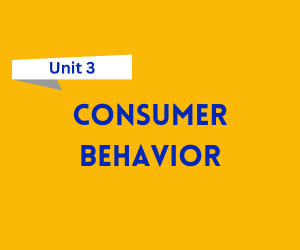In marketing, the success of a company largely depends on the products it offers, how those products are branded, and how they are priced. A well-designed product backed by a strong brand name and a smart pricing strategy can help businesses gain a competitive edge and attract loyal customers. This unit focuses on three important pillars of marketing: Product decisions, Branding, and Pricing—each playing a vital role in influencing consumer buying behavior and business profitability.

Download Unit 3 – Product, Branding and Pricing Decisions Notes
Get simplified revision notes for this unit:
Download Unit 3 Notes PDF
Product: Levels, Classifications, and Product Mix Decisions
A product is anything that can be offered to the market to satisfy a need or want. It includes both tangible goods and intangible services.
Levels of Product:
According to Philip Kotler, a product can be viewed at three levels:
Core product – the basic benefit or service the customer seeks (e.g., transportation from a car).
Actual product – the physical item with features, brand, and quality (e.g., a Honda City car).
Augmented product – additional services or benefits like warranty, customer service, or after-sales support.
Product Classifications:
Products can be classified into two broad categories:
Consumer products – bought for personal consumption. These include:
Convenience products (e.g., soap)
Shopping products (e.g., clothes)
Specialty products (e.g., luxury watches)
Unsought products (e.g., insurance)
Industrial products – used for business operations such as raw materials, machinery, and components.
Product Mix Decisions:
The product mix refers to the complete set of products a company offers. Key decisions include:
Width – number of product lines
Length – number of products within a line
Depth – variations of a product (e.g., flavors, sizes)
Consistency – how closely related the products are in terms of use or production
Businesses must regularly review their product mix to ensure alignment with market demand and profitability goals.
Product Life Cycle (PLC) and Strategies
Every product goes through a life cycle that consists of four key stages:
Introduction – The product is launched; sales are low and costs are high. Promotion is focused on awareness.
Growth – Sales increase rapidly, profits rise, and competition begins. Marketers improve features and expand distribution.
Maturity – Sales peak and stabilize. Competition intensifies; companies may cut prices or innovate to maintain market share.
Decline – Sales and profits decline. Firms may discontinue the product or find niche markets.
Each stage of the Product Life Cycle (PLC) requires different marketing strategies regarding promotion, pricing, and product modification.
Branding: Importance, Brand Equity, and Brand Positioning
Branding refers to the process of giving a product a unique name, symbol, or identity that distinguishes it from competitors. A strong brand creates recognition and builds trust among consumers.
Importance of Branding:
Helps in customer loyalty
Differentiates the product in the marketplace
Allows for premium pricing
Facilitates brand extension and repeat purchases
Brand Equity:
Brand equity is the value that a brand adds to a product. It is built through customer perception, loyalty, awareness, and associations. High brand equity leads to stronger customer preference and better financial performance.
Brand Positioning:
Brand positioning is about creating a specific image of the brand in the consumer’s mind. It involves identifying a unique selling proposition (USP) and aligning it with customer needs. For example, Nike positions itself as a brand for athletic excellence and empowerment.
Packaging and Labeling
Packaging refers to the design and production of the container or wrapper for a product. It plays both functional and promotional roles.
Functions of Packaging:
Protection of the product during handling and shipping
Attraction through appealing design and colors
Convenience for storage and use
Promotion by displaying brand information and messages
Labeling, on the other hand, includes the written information on packages that describe the product and its contents. It is essential for providing:
Legal information (e.g., ingredients, expiration date)
Instructions for use
Brand identification
In competitive markets, innovative packaging can help a product stand out and influence purchase decisions.
Pricing: Objectives, Factors Affecting Pricing, and Strategies
Pricing is the process of determining the value a customer must pay to obtain a product or service. It directly affects revenue and profitability.
Objectives of Pricing:
Profit maximization
Market share growth
Survival in competitive markets
Customer value creation
Product positioning in the market (e.g., premium or budget-friendly)
Factors Affecting Pricing Decisions:
Internal Factors – company objectives, production costs, marketing mix, product stage in PLC
External Factors – competition, consumer demand, economic conditions, government regulations, and market trends
Pricing Strategies:
Cost-plus pricing – adding a markup to the cost
Penetration pricing – low price to enter the market
Skimming pricing – high price initially, then gradual reduction
Psychological pricing – setting price points that seem more attractive (e.g., ₹999 instead of ₹1000)
Competitive pricing – setting prices based on competitor prices
Value-based pricing – based on the perceived value to the customer
Choosing the right strategy requires an understanding of the target market, competition, and company goals.
